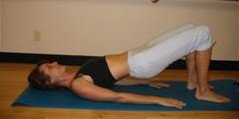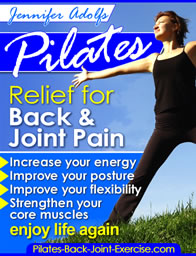Pilates Exercise for Depression
Exercise for depression may not sound like fun.
But...
If you’re feeling sad or anxious and the couch, remote, and potato chips seem to be beckoning, consider trying nature’s mood-enhancer instead: get that body moving!
Research has shown you’ll feel much better skipping the carbs and TV and taking Fido for a brisk walk, or enjoying a rejuvenating Pilates session.
Exercise is a natural antidepressant!
With up to 10% of Americans experiencing it at some point in their lives, depression has caught the attention of consumers and drug companies alike.
It is estimated that drug companies boast sales of over $10 billion each year and those expensive ads you see on TV, paired with our society’s desire for an easy fix, have reshaped how depression is treated.
Did you know?
A much less known fact about depression treatment is that since the late 1970’s researchers have been examiningthe influence of physical activity on depressive symptoms, and since that time, research has consistently reported that exercise can improve symptoms of depression and anxiety.
Considering the expense and potential negative side effects from medication, it is important to know about treatment alternatives like exercise.
Pilates creates changes in your mind and body that can improve such symptoms as sadness, anxiety, irritability, stress, fatigue, anger, self-doubt and hopelessness.
9 Pilates Exercise Benefits that can help:
If you engage in an effective low-impact program such as Pilates to exercise for depression, you will find these exercise benefits:
Take Control Today!
Get your Pilates DVD for Healthy Back and Joints and Mind here.
1. Increase your sense of mastery, which can help if you don't feel in control of your life or mood.
2. Raise levels of certain mood-enhancing neurotransmitters in your brain.
3. Release muscle tension.
4. Boost those feel-good endorphins.
5. Sleep better at night.
6. Reduce levels of the stress hormone cortisol that build up while you sleep.
7. Provide a distraction from your worries.
8. Get rid of built-up stress and frustration.
9. Improve your health and body, which can help lift your mood.
When you have depression or anxiety, exercising may be the last thing you think you can do. But you can overcome the inertia. By penciling in regular appointments to exercise for depression using the Pilates Method, you create a schedule you can stick to.

One of my favorite exercises to do when I really don't feel exercising at all is the Pilates Bridge.
This Pilates exercise helps to open the spine, get the fluids moving up and down to wake up your brain, and it just feels good.
Consistency is crucial. In other words, avoid the temptation to cancel even if you’re feeling down. Remember how energized you’ll feel afterward.
I can’t count the times clients tell me, “I really didn’t feel like working out today, but after doing Pilates for a half hour or an hour, now I feel so much better!”
Seeing your doctor should always be your first step in treating depression, but remember that exercise is one of the ways you can help alleviate your symptoms while you reshape your body! A pretty good deal overall.
Recent Articles
-
Pilates after Total Knee Replacement
Apr 23, 20 06:20 PM
It's 2 yrs.post op since I had total knee replacement in both knees. In order for them to last it's recommended that you lift not more than 25 lbs. Pilates -
SI Joint Pain Improved with Pilates!
Aug 11, 17 12:29 AM
Dear Jennifer, I just wanted to reach out and thank you for dramatically improving and changing my life. About a year ago, I woke up in debilitating -
Hip pain after 4 months of Reformer Pilates
Jul 12, 17 06:44 PM
Hi, I had a total right hip replacement 8 months ago; I rehabbed really quickly, although I was also (and still am) dealing with L4 spondylolisthesis.
 | Get Instant Access to Loads of Color Pictures, Postures, and Information Designed to Increase Comfort and Happiness. Learn to Enjoy Life Again! Learn More! |

New! Comments
Have your say about what you just read! Leave me a comment in the box below.